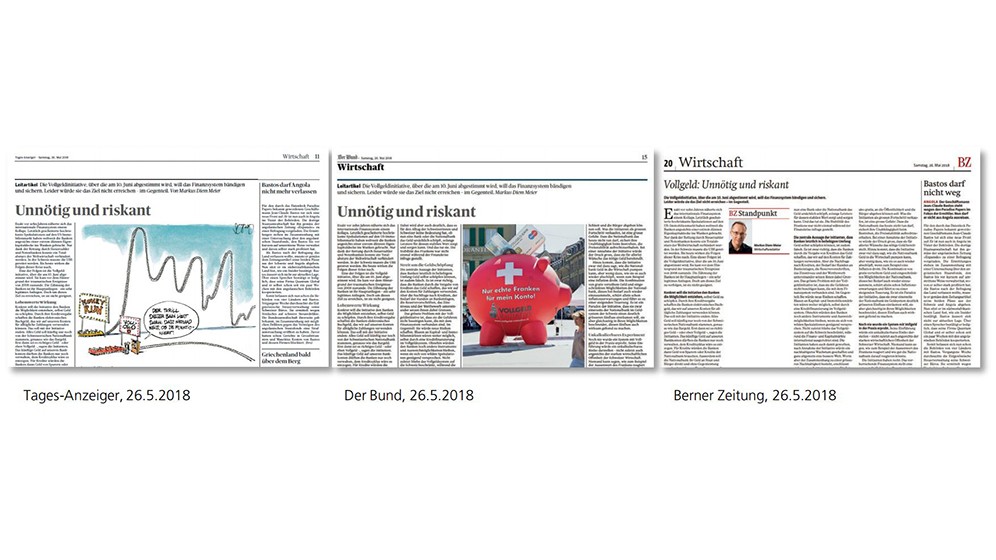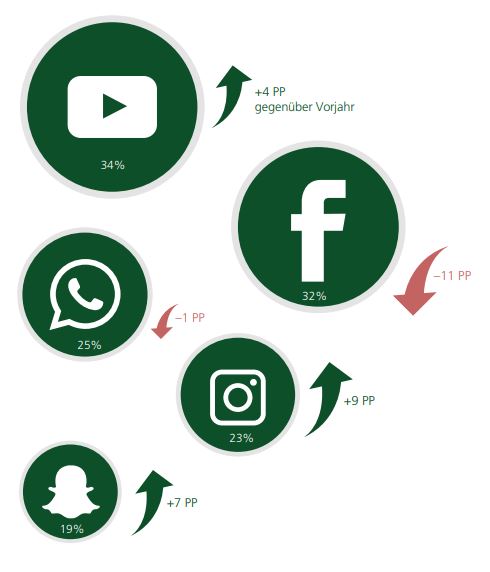Diversity of media decreases due to central editorial offices
Editorial network systems restrict journalistic competition, an indispensable prerequisite for quality. In addition, more and more people are getting less and less information. And more and more journalists are migrating to the PR industry.

The ninth edition of the 2018 Quality of the Media Yearbook from the University of Zurich's Research Institute Public Sphere and Society is out. One of the findings: In Switzerland, the same content is being disseminated more and more often. This is shown by an automated text comparison of Swiss media coverage. In the democratically sensitive area of national political reporting, 54 percent of articles already appear in at least two newspapers at the same time.

The automated comparison using Jaccard coefficient proves that the proportions of shared contributions between media from the same association are very high. The Tages-Anzeiger, the Confederation and the Bernese Newspaper have been part of Tamedia's newly created central editorial team for German-speaking Switzerland since this year. Following the introduction of the cooperation, the shares of shared editorial contributions in these three newspapers rose by 17 percentage points to currently 55 percent. Within opinion-driven formats such as editorials or commentaries, the proportion of identical reporting has even risen from 40 percent to 68 percent. This means that the same voting or election recommendations are increasingly being made prior to ballots, which is problematic from a democratic policy perspective, write the study authors. Editorial network systems promote a uniform setting of topics and perspectives in the media arena. The danger of journalistic mistakes increases because the control function between the media is weakened.
Reporting quality still high despite loss of diversity
Viewed across the 66 information media studied, the quality of reporting in Switzerland nevertheless remains high, the report continues. In the 2017 survey year, the 35 titles scored between 6.1 and 8.3 out of a maximum of 10 quality points. The newly included weekly newspaper (WoZ) makes it straight to fourth place in the overall ranking and equals the score of the NZZ. However, around a third of all media are unable to maintain the same level of quality as in the previous year. Losses are evident in the diversity dimension, but also in classification performance. The reduction in resources in Swiss information journalism is having an effect.
Personnel brain drain in journalism and growth in the PR sector
The growing weakness of earnings in information journalism means that the number of media professionals in the news sector is constantly declining. Between 2011 and 2016, 3,000 jobs were lost in the online and press media sector (-19 percent). In the same period, the number of employees in the PR sector increased by 16 percent. The number of self-employed journalists has also increased by 20 percent since 2011. The precarious funding situation in information journalism is fostering a trend whereby more and more journalists are either "switching sides," i.e., pursuing new employment in the PR sector, or seeking their fortunes as freelancers, mostly under precarious conditions because of long-term insecurity.

More and more inform themselves less and less
Since 2009, the number of so-called news-deprived people has been steadily increasing. The audience belonging to this media usage type consumes little news and, if it does, then in low-quality information media, primarily via social media. Of all user groups, the news-deprived have grown by far the most since 2009 (+15 percentage points). In 2018, more than one in three media users (36 percent) belong to this user type. Among 16- to 29-year-olds, the figure is 53 percent. Since willingness to pay is directly linked to interest in news, it is precisely the news-deprived group that is least willing to pay for information journalism that is growing the most.

New media law (BGeM): proposals do not go far enough
The conclusion of the study authors: In view of the fact that professional information journalism lacks a sustainable business model and continues to lose financial and human resources, the proposals for expanding media funding in the new Federal Law on Electronic Media (BGeM) do not go far enough. First, in addition to online providers that produce audiovisual content, online text media that specialize in producing background information should also be eligible for funding. Secondly, more funds must be earmarked for direct media promotion for private media providers so that the journalistic decline in diversity in Switzerland can be effectively halted. To ensure that sufficient funds are available for the SRG and direct media promotion, the absolute amount of the media levy must be set sufficiently high and must not be reduced further in subsequent years. (ank/pd)








